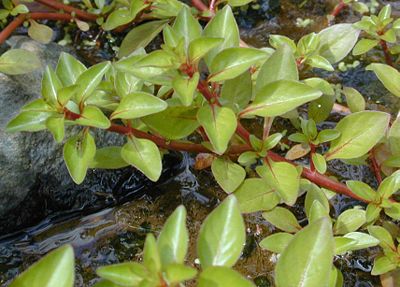Botany/Plant structure laboratory
Appearance
I'm experimenting here with the practicality of having laboratory excercises as part of the Botany Study GuideComments invited.
Chapter 3. Plant Structure Laboratory
[edit|edit source]Leaves
[edit|edit source]Examine this 'marsh purslane' plant and determine the following about its leaves:
3-1.Leaf arrangement is:
- a) opposite
- b) alternate
- c) whorled
- d) entire
- e) smooth
3-2.Which of the following describes the leaves:
- a) sessile, margin toothed
- b) peltate, margin entire
- c) sessile, margin entire
- d) petiolate, margin crenate
- e) petiolate and hirsute
3-3.Only one of the following statements is true:
- a) Amonocotwith clasping leaves
- b) Adicotwith hairy, waxy leaves to reduce water loss
- c) Amonocotgrowing in relatively wet areas
- d) Adicotwith leaves opposite, leaf bases attenuate
- e) A wetland plant with compound leaves
Answers to Laboratory Questions:
- 3-1~ a
- 3-2~ d (but tricky, aspetioleis about 1 mm long and margins weakly crenate).
- 3-3~ d

